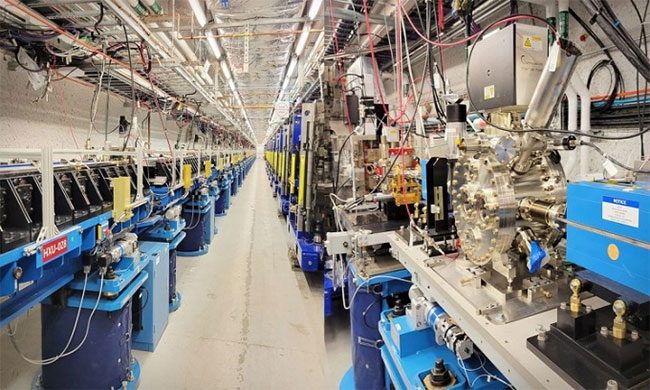Ten meters underground and not far from Stanford University, scientists are perfecting a laser machine that could change the way we study the building blocks of the universe.
When completed in 2022, Coherent Light Source II, or LCLS-II, will be the second X-ray laser at the SLAC National Accelerator Laboratory of the U.S. Department of Energy. The first LCLS laser has been operational since 2009, producing a beam with 120 light pulses per second. In contrast, LCLS-II can generate one million pulses per second and its laser beam will be 10,000 times brighter than its predecessor.

Undulator Hall, a segment of the undulator used to convert the electron beam into X-rays. (Photo: Andy Altman/CNET)
“I think it’s entirely reasonable to say that LCLS-II will usher in a new era of science,” said Dr. James Cryan at SLAC. “The machine can create pulses in less than a trillionth of a second.” As a result, LCLS-II enables researchers to conduct experiments that were previously deemed impossible.
LCLS functions like a microscope with atomic-level resolution. At its core is a particle accelerator, a device that accelerates charged particles and directs them into a beam. This beam passes through a series of undulators (devices known as wigglers) to produce X-rays. Scientists can use these X-rays to create molecular movies, capturing images of atoms and molecules in motion within trillionths of a second and stitching them together like a film.
Scientists from nearly every field of research come from around the world to conduct experiments with LCLS. Their molecular movies reveal chemical reactions, unveil the behavior of atoms inside stars, and create vivid images detailing the process of photosynthesis. According to Andrew Burrill, deputy director of the SLAC laboratory, LCLS-II and its higher power will revolutionize molecular imaging.
Although both lasers accelerate electrons to speeds close to the speed of light, they have distinct differences. The accelerator of LCLS pushes electrons through a copper pipe operating at room temperature, which means it generates a significant amount of heat. A copper mold absorbs most of that heat. This is why engineers have turned to a new superconducting accelerator, which includes dozens of 12-meter-long devices called cryomodules, designed to operate at -271 degrees Celsius thanks to a large refrigeration plant above ground.
According to Cryan, LCLS-II will help SLAC scientists answer questions that have puzzled them for years, such as how energy transfer occurs within molecular systems. They hope to produce the first electron beam using LCLS-II by January 2022.


















































